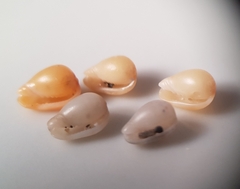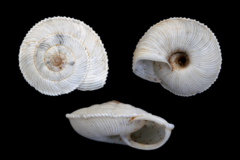Common limpet
Patella ulyssiponensis
Patella ulyssiponensis is a species of marine gastropod mollusc that belongs to the family Patellidae. It is commonly known in English as the “Yellow Limpet” and is prevalent along the rocky shorelines of the northeastern Atlantic Ocean and the Mediterranean Sea, which includes the coastlines of the Comunidad Valenciana in Spain.
Patella ulyssiponensis is characterized by its distinct conical shell, which is often yellowish or cream-colored, sometimes with streaks or mottling of darker colors. The shell is generally oval or somewhat circular in shape, reaching sizes of up to 6 cm in diameter. The exterior of the shell exhibits fine radial ridges, aiding in the limpet’s ability to cling tightly to rocks and other hard substrates in its intertidal habitat.
The species is adapted to withstand the harsh conditions of its environment, including strong wave action and exposure during low tides. Limpets like Patella ulyssiponensis are known for their homing ability, returning to the same spot on a rock after feeding to create a “home scar,” a depression in the rock that perfectly matches the shape of their shell, offering protection from predators and desiccation.
Locally in the Comunidad Valenciana, they may be found under the name "lapa," and they form an integral component of the rocky shore ecosystems, feeding on algae grazing on the rock surfaces.
- Habitat: Intertidal rocky zones.
- Diet: Algae and biofilm on rocks.
- Distribution: Northeastern Atlantic, Mediterranean Sea, including Comunidad Valenciana coastline.
- Conservation: Not currently considered threatened, but populations can be affected by over-collecting and habitat disturbances.







